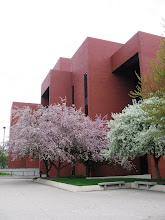Creating a Digital Library at Your Fingertips
The Ball State University Libraries are in transition from offering mostly print collections to providing print and digital collections to support more fully the way today’s students are learning. This transition is facilitated by taking advantage of the ubiquitous application of information technology and the Internet.
This digital transition has resulted in an expansion of informational materials for research and learning, and it has equalized access to rich resources that institutions can offer through subscription, replacing ownership as the only model. The availability of electronic books and journals, digital academic databases offering full-text resources, and digitized learning materials from archival and special collections allow students and faculty to have a digital library at their desktop whenever it is needed. Students and faculty have never had so much access to so many quality informational materials at their fingertips, including a broad range of new, innovative, and seamlessly integrated digital services to facilitate research and learning.
The University Libraries are also engaging in activities designed to increase our students’ role in the academic life of the University, supporting student achievement through continually enhancing the effectiveness of the Libraries’ programs, services, and collections with the objective of the Libraries’ being second only to the classroom for learning and discovery. By creating, developing, adapting, and implementing innovative and creative technologies, products, and services that support research, learning, and classroom engagement, the Libraries support the University as it moves toward national prominence in teaching, research, and service. The University Libraries invite our students to question, explore, discover, and collaborate. The increase in our digital collections will facilitate these things and will enable and enhance our students’ achievements.
Several metrics are used for measuring our success at reaching students and faculty, including analyzing our circulation by the customer segment (freshman, sophomore, junior, senior, graduate, staff, faculty), and similarly analyzing customer segments for those who use the Libraries’ public workstations or who print using the free public printers. These analyses are possible because users automatically authenticate when using these services. We also carefully examine our turnstile counts.


0 Comments:
Post a Comment
<< Home